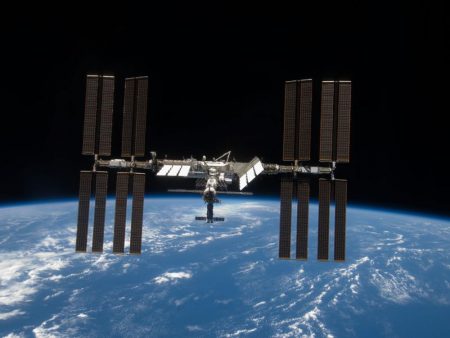April 14, 2018 – It’s not yet “abandon ship” but it appears to be going in that direction regarding NASA and the International Space Station (ISS). When the United States Congress passed the NASA Transition Authorization Act last year, it laid out the requirements for the agency to submit a report. That report was published on March 30th. In the report it states:
- The ISS will continue to serve as a research and test facility for long-duration space flight for the foreseeable future.
- The ISS will serve as the model for the development of human presence in cislunar space.
- Soliciting of public-private partnerships centered around ISS will begin in 2018 to foster further growth of a commercial space industry which can include the operation of privately-owned on-orbit modules and platforms directly linked to or in proximity to the station.
- The ISS will continue to serve as a physical and biological science platform for not just studying the environment of microgravity, but also for the development of applications that will serve human needs on Earth.
- Private industry partnerships will help defray NASA costs related to the ISS.
- At some point (not specified by date), private industry will take on a much larger role in support of the ISS including exclusive use of commercial providers for space taxi services (2025 is the specified date).
The report states that the ISS platform’s structural integrity is not in danger and should have a life well beyond 2028 based on its current specification. For many of the modules that joined to ISS in the last few years of construction, NASA believes the structural life of these units can continue well into the 2030s. Current annual operational costs for ISS equals $1.1 billion US.
The ISS is not exclusively NASA’s. It has been developed as a multi-national platform with Russia a co-equal operator but also including significant contributions from Canada, Japan, and 11 European countries. Today all human crews going to ISS fly on Russian Soyuz rockets. So clearly, consultation with Russia as well as the other national partners will have to happen as the agency modifies its role through the 2020s. It is also highly likely that NASA and its other partners will invite new national as well as industry partners to participate in the engineering, scientific research, and technological advancements happening on the ISS.
According to the report, the biggest shift in terms of the humans-in-space project will be completed by 2024. At that time human health and countermeasures to enhance our presence in low-Earth orbit should be largely understood. From there emphasis will move to long-term sustainability for humans in space in closed-cycle environments which will then be translatable to cislunar (the Lunar Orbital Platform Gateway) and other Deep Space objectives including the Moon surface, and Mars.
The transition report also outlines short and long-term objectives and how they could conceivably be met without the ISS, noting that new modules and platforms not as complex as the station could serve to support research activities and objectives stated by the agency. For example, specialized modules could serve astrophysics, and Earth sciences research. An independent module or space platform could specialize in biomedical research. And NASA also acknowledges that some current activities on board the ISS, at a future date, could be automated to be run by artificial intelligence and robots in uncrewed space laboratories.
With the report tabled in the United States Congress, the next step is for it to be reviewed and ultimately given the budget to make the ISS transition a reality.









